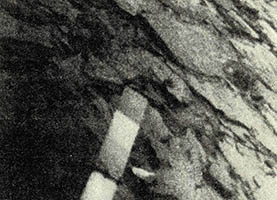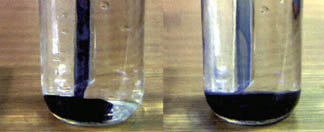지난 1992년 10월 8일 목요일은 지구를 위해 가장 열심히 일하고 충성스럽게 금성의 궤도를 순회하던 파이어니어 12호라는 종이 사라진 날이었다. 이 인공위성은 1978년 12월 4일 금성의 궤도로 진입한 이래 줄곳 자료를 송신해 왔다.
그러나 파이어니어 12호는 1961년 소련의 베네라 1호가 금성에 도착하면서부터 시작해 그후 쏘아올려진 약 35개의 금성탐험 탐사기중 하나에 불과하다. 금성의 대기에 관해 상세한 자료를 보내왔던 최초의 우주선은 베네라4호로서 1967년 10월 18일 금성의 구름 속에 들어가 93분간 방송을 해왔다. 1989년 이후엔 마젤란 우주선이 금성을 전파탐지기로 탐사해 왔고 이 작업은 앞으로도 계속될 것으로 기대되고 있다. 올해는 금성에 관한 자료를 분석한 많은 과학논문들이 발표됐다.
금성은 태양의 두번째 행성으로서 세번째 행성인 지구 보다 약간 작을 뿐이다. 옛날 사람들은 금성을 두개의 물체로, 즉 아침별과 저녁별로 생각했는데 이 생각은 두 별이 같은 밤엔 동시에 나타나지 않는다는 사실을 깨달을 때까지 계속됐다. 그리스 사람들은 금성을 사랑과 미의 여신이라고 해서 '비너스'라고 이름붙였다.
지구상의 밤하늘에서 금성은 정말 아름답고, 달을 제외하면 가장 밝은 천체가 된다. 1610년 갈릴레오는 달처럼 금성도 상(相)이 있음을 알아냈다. 이것은 기원전 350년에 그리스의 헤라클레이데스에 의해 최초로 제안됐으나 경멸당했던 우리 우주의 태양중심설을 증명하는데 도움을 주었다. 금성의 일정한 상은 태양빛을 반사하고 바로 지구아닌 태양을 공전하고 있는 까닭에 나타나는 현상임을 의미했다.
금성은 그러나 가까이서 보면 아름다움이 훨씬 덜하다. 물이 없고 단테의 지옥보다 뜨거워서 금성엔 아마도 생명이 존재하지 않는 것 같다. 표면의 열은 절대온도 7백50° 혹은 화씨 8백50°로서 납을 녹일 정도로 뜨겁다.
금성의 대기는 지구의 대기보다 95배나 더 밀도가 높다. 금성의 대기는 주로 이산화탄소인데 더욱 독한 유황 불화수소 및 염화수소산이 포함돼 있다. 1992년 초에 UCLA의 데이비드 베이커2세와 제럴드 슈베르트는 금성의 대기중 어떤 부분은 어쩌면 현재 연구하고 있듯이, 대기층간의 동력에 의해 얇지만 수평형으로 넓은 대류전지를 형성하고 있음을 보여주었다.
과학자들이 금성의 대기를 이해하려고 노력하는 이유 중의 하나는 언젠가 그 대기를 발전시키고자 노력할는지 모르기 때문이다(구름 속에 박테리아나 청록색의 해조를 뿌리는 등). 또 다른 이유는 지구를 덥게 만드는 '온실효과'의 위협이다. 금성은 이미 엄청난 온실효과를 경험하고 있으므로 우리가 이 점을 이해한다면 지구가 접할 유사한 숙명을 예방할 가능성도 있다.
컴퓨터 모의실험을 이용해 워싱턴주립대학의 매튜 뉴먼과 콘웨이 리오비는 최근 금성의 자전속도가 2백43일 임에도 불구하고 그 위에서 금성의 대기를 4일에 한번씩 회전하고 있는 강풍을 연구했다. 밀도높은 대기 위에 쏟아지는 태양열의 방사가 결국은 열의 조류현상을 낳고 이것이 바람을 불러일으키는 것이다. 과학자들은 아직도 금성대기에 관한 다른 질문들, 가령 금성의 북극 남극 주변하늘을 덮고있는 구름들은 왜 따뜻한가, 낮은 대기층에서 배경회전을 유지하도록 만드는 것은 무엇일까 등에 관한 답을 찾고자 노력하고 있다.
금성의 표면연구는 마찬가지로 진행중이다. 분화구의 자국들이 있는 이 표면엔 산들이 있고(가장 큰 산맥의 이름은 맥스웰이라고 한다) 깊숙한 골짜기가 있고 화산이 만든 둥근 언덕이 있으며 지구의 그 어느 강보다도 긴 용암강들이 있다. 마젤란우주선이 보내온 사진들은 최근 금성에서 산사태가 발생했음을 보여주었다고 생각됐으나 이것은 실수였음이 나중에 밝혀졌다. 보다 최근의 연구는 어쩌면 금성에서 산사태가 일어났을 가능성이 있지만 최근이 아닌 과거였음을 밝히고 있다.
과학자들은 금성엔 지구 표면 위에서 움직이는 지판같은 것은 없다고 생각했었다. 그런데 1992년 5월 케임브리지대학이 댄 매킨지는 미국의 지구물리학회로 금성에 제법 다양한 형태의 지판들이 존재한다고 알려왔다. 이를 인정할 수 밖에 없는 결정적인 증거는 크고 얼룩덜룩한 모양의 아르테미스라는 이름의 지판인데 이 지판은 '아프로디테 테라'라는 적도 부근의 고지대에 위치하고 있다. 아르테미스는 새롭게 고체덩어리로 형성된 부분인지도 모른다. 아르테미스 옆엔 도랑들이 있는데 이 도랑들은 하나의 지판이 다른 지판 아래로 깔리는, 지구의 바다 밑에서 찾아볼 수 있는 도랑과 비슷하다.
UCLA의 제럴드 슈베르트와 스크립스 해양연구소의 데이비드 샌드웰도 마젤란우주선이 보내온 사진들을 분석했다. 그들은 금성의 도랑이 다르다고 주장한다. 지구에선 용암이 바다밑으로부터 솟아나와 굳어지면서 수평으로 움직여 다른 지판 밑으로 빠져서 깔리게 될 때까지 먼 거리를 이동한다. 그러나 금성에선 지판이 수평으로 이동하지는않는다. 이는 금성의 표면이 맨틀의 열에 의해 찢겨질 때 용암이 분출돼 나오면 이 찢겨진 지각의 어느 한쪽이 수직으로 가라앉게 되는 까닭이 아닌가 추정되고 있다.
금성에 있는 분화구들의 절반 가량은 그 가장자리가 어둡게 나타나지만 중앙 분화구는 없다. 지구물리학자인 자늘은 많은 유성들이 금성대기의 '공기 역학적 압력'속으로 빠져들어 조각으로 부서져서 지난 1908년 6월 30일 시베리아 퉁구스카 지역의 숲에 떨어져 소동을 일으켰던 것과 유사한 충격효과를 유발했을 것으로 믿고 있다. 화성과 달리 금성이나 지구는 둘다 제법 규모있는 대기권을 가진 행성들이다. 지구 위의 표면에서 무슨 일이 발생했던가를 증명하는 상당부분이 바다물에 의해 지워져버리고 있다. 반면에 우린 금성 표면의 현재와 과거는 물론 또한 어떻게 그 대기권이 표면에 영향을 미치는가를 파악할 수 있다.

Farewell To A Hard Working 'Pioneer'
Thursday, Oct 8, 1992, marked the death of one of Earth's most hard-working and faithful servants-the Venus orbiter called Pioneer 12. It entered orbit around Venus on Dec. 4, 1978, and had been transmitting data ever since.
Pioneer 12, however, was only one of about 35 space probes investigating Venus since 1961, when the Soviet Venera I arrived at the planet. The first spacecraft to transmit internal data about the Venusian atmosphere was Venera 4, which broadcast for 93 minutes after entering the Venusian clouds on Oct. 18, 1967. Since 1989, the Magellan spacecraft has been radar-mapping Venus and it's hoped that it will continue to do so. This year there have been many scientific articles about the Venus data.
Venus is the second planet out from the sun, and only slightly smaller than the third planet, Earth. The ancients thought Venus was two objects, the morning and evening "stars," until realizing that both never appeared in the same night. The Greeks named the planet Venus for the goddess of love and beauty.
In the skies of Earth, Venus is certainly beautiful-the brightest object other than Earth's moon. In 1610, Galileo found that, like the moon, Venus has phases. This helped prove the scorned heliocentric, or sun-centered, theory of our planetary system, first proposed by the Greek Heracleides in 350 B.C. The particular phases of Venus meant it was shining by reflected light from the sun, and doing it in such a way that Venus had to be circling the sun, not Earth.
Venus is considerably less beautiful close up. Without water and hotter than Dante's hell, Venus is probably lifeless. Surface heat is said to be 730K, or 850 degrees Farenheit, hot enough to melt lead.
The atmosphere of Venus is 95 times as dense as Earth's. It's mainly carbon dioxide, with even more poisonous additions of sulfuric, hydrofluoric and hydrochloric acids. Early in 1992, R. David Baker Ⅱ and Gerald Schubert, of UCLA, showed that in certain areas the atmosphere of Venus forms convection cells that are thin but horizontally large, possibly due to the dynamics of the atmospheric layers, now under investigation.
One reason scientists are trying to understand the Venusian atmosphere is that someday an attempt may be made to improve it(like seeding the clouds with bacteria and blue-green algae).
Another reason is the threat of a "greenhouse effect" warming up Earth. Venus already has a runaway greenhouse effect, and if we understand that, we might be able to prevent Earth from a similar fate.
Using computer simulations, Matthew Newman and Conway Leovy, at the University of Washington, recently investigated the strong winds that rotate the Venusian atmosphere every four days, while the planet below takes 243 days to complete a rotation. Solar radiation on the dense atmosphere apparently drives the thermal tides, which promote the winds. Scientists are still trying to answer other questions about the Venusian atmosphere, such as: Why are the clouds over the poles so warm? What maintains the background rotation rate of the lower atmosphere?
The surface of Venus is under study, too. Pocked with craters, it features mountains(the largest is named Maxwell), rift valleys, volcanic domes and rivers of lava longer than any water river on Earth. It was thought that Magellan's images revealed a recent landslide; then this was said to be an error. More recent study indicates that there probably were Venusian landslides, but in the past.
Scientists thought Venus had no tectonic plates like those moving around on Earth's surface. In May, 1992, Dan P. Mckenzie of Cambridge University told the American Geophysical Union that Venus may have a modest, patchy variety of plate tectonics. The most compelling evidence is a big, smudgy shape named Artemis, in the equatorial highland called Aphrodite Terra. Artemis may be a region where new crust is formed. Next to Artemis are trenches similar to the subduction trenches seen on Earth's ocean floor, where plates descend under other plates.
Gerald Schubert, at UCLA, and David T. Sand-well, at the Scripps Institution of Oceanography, have also analyzed the Magellan images. They suggest that subduction on Venus is different. Earth's crust wells up from a mid-ocean ridge, then moves long distances horizontally until it dives under another plate at the subduction zone. On Venus, plates don't seem to move horizontally. It's postulated that when the Venusian surface is torn by mantle heat, crust on either side of the tear sinks vertically as molten mantle rock rises.
Dark margins encircle half of the Venusian craters, but also exist without a central crater. Geophysicist K.J. Zahnle believes that many meteorites would break up as they plunge into the "aerodynamic stresses" of Venus' atmosphere, causing shock impacts similar to the blast which felled trees in Tunguska, Siberia, on June 30, 1908.
Unlike Mars, Venus and Earth are both planets with good-sized atmospheres. On Earth, water wipes away the evidence of much of what happens to our planet's surface. On Venus, We can detect what the surface is and was like, and how the strange Venusian atmosphere affects it.
(C) 1992, Los Angeles Times Syndicate

















